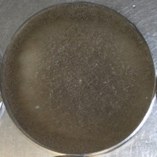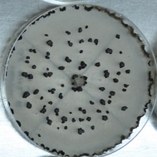Influence of light quality on growth, morphology and pathogenity of botrytis isolates
LED lighting, which combines red and blue light, is used more frequently in greenhouse horticulture, amongst which the hydroponic cultivation of lettuce.
Professor Marie-Christine Van Labeke explains: "This narrow-spectrum light source is ideal to precisely control of crop growth and development. A relatively large amount of research has already been performed on how crops such as lettuce react to different LED spectra. However, what has not been researched much so far is how fungi react to this.”
Research at Ghent University with support from the Agrotopia endowed chair looked into the response of the fungus Botrytis to this form of artificial lighting.
Prof. Höfte: “Botrytis is an important pathogen of lettuce, but also many other crops. Will mycelium growth and sporulation increase due to specific LED spectra? Or can you suppress this by using specific spectra? And what about the formation of the sclerotia?”
Hanna Mestdagh attempted to find an answer to these questions during her Master's dissertation.
Botrytis growth is not affected by LED spectra
A first important hypothesis was that some LED light spectra may stimulate or suppress the growth of Botrytis mycelium. Multiple isolates were isolated from lettuce, tomato and grape and grown under different LED light spectra, such as red, blue and a combination in addition to white light on an artificial growth medium.
Their mycelial growth was not affected by the spectra. This is important as it would be very disadvantageous if widely used spectra stimulate the growth of Botrytis.
Blue light suppresses sporulation
A second hypothesis concerns the sporulation of Botrytis.
Stimulation by different LED light spectra would be very unfavourable, while it would be good if a certain spectrum suppressed sporulation so that as a result, LED lighting could be used as a physical way to suppress Botrytis.
The research showed that a combination of blue light in the spectrum (ie 100% blue or blue + red and also white light) suppressed sporulation in most isolates. However, this study was performed on isolates on artificial growth medium and therefore still have to be repeated via an infection test on host plants such as lettuce.
Botrytis can develop survival structures (sclerotes) that allow the fungus to survive in the soil under adverse conditions or when no host plant is available.
The results demonstrated that these structures cannot be formed by LED spectra containing blue light. This can be an interesting strategy to counteract the formation of these fungal survival structures.
Botrytis can form spores (left) for spreading, but also sclerotes (right) for survival in adverse conditions.
Professor Höfte: “To answer the ultimate question of whether light quality eventually can be used to suppress Botrytis on lettuce, further research is required. This study looked into the direct effect of LED spectra on the growth and morphology of Botrytis isolates of different origins. The next step is to research the effect of this light source on the interaction between the fungus and its host plant.”
Hereto, different ratios of the promising combination of red and blue can be explored. The main challenge will be the variability to which Botrytis isolates respond to different light spectra.


